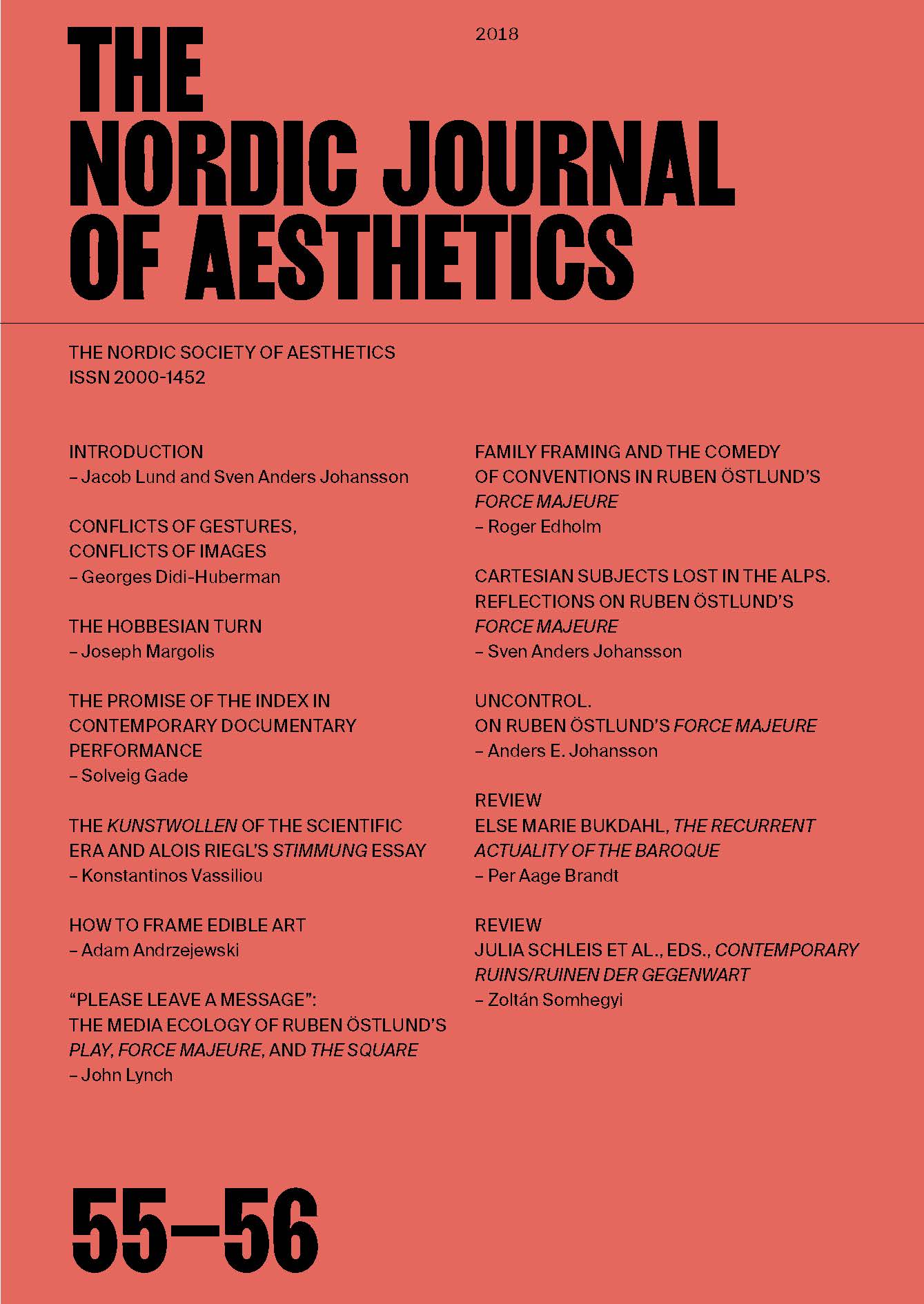FAMILY FRAMING AND THE COMEDY OF CONVENTIONS IN RUBEN ÖSTLUND’S FORCE MAJEURE
DOI:
https://doi.org/10.7146/nja.v27i55-56.110722Abstract
Ruben Östlund’s Force Majeure (2014) centres around a Swedish family vacationing at a ski resort in the Alps. The film depicts how the family breaks down after the father leaves his wife and children behind while fleeing from a possible avalanche. This breakdown is reflected in the film’s use of framing. In the opening scenes, the viewer is presented with a series of family portraits. After the averted disaster, the family is no longer shown as a coherent whole. Framing in Force Majeure is thus as a technical as well as a thematic matter related to the film’s exploration of the nuclear family. Framing is also connected to the comedic characterization of the family that the film depicts. Rather than identifying with them, the viewer is invited to critically reflect upon their self-image and their actions. The focus of this essay is therefore the concept of framing in connection with the film’s theme of family and certain comedic conventions. Force Majeure is symmetrically structured and the narrative progression adheres to a traditional plot-pattern moving from the disruption of order to the restoration of order. Yet, the film also flaunts its structure and makes the viewer aware of the clichés of conventional storytelling as these clichés and conventions are reproduced in the lives of the main characters.
Downloads
Published
How to Cite
Issue
Section
License
Authors who publish with this journal agree to the following terms:
- Authors retain copyright and grant the journal right of first publication with the work simultaneously licensed under a Creative Commons Attribution License that allows others to share the work with an acknowledgement of the work's authorship and initial publication in this journal.
- Authors are able to enter into separate, additional contractual arrangements for the non-exclusive distribution of the journal's published version of the work (e.g., post it to an institutional repository or publish it in a book), with an acknowledgement of its initial publication in this journal.
- Authors are permitted and encouraged to post their work online (e.g., in institutional repositories or on their website) prior to and during the submission process, as it can lead to productive exchanges, as well as earlier and greater citation of published work (See The Effect of Open Access).




